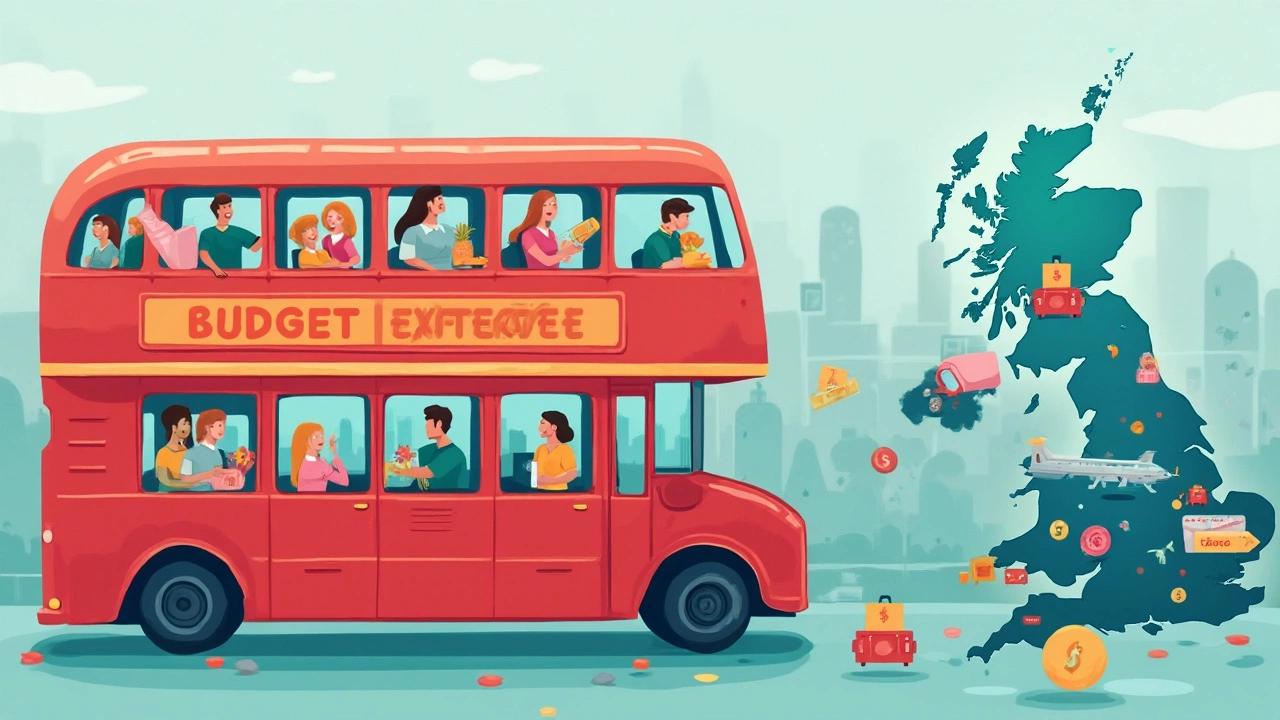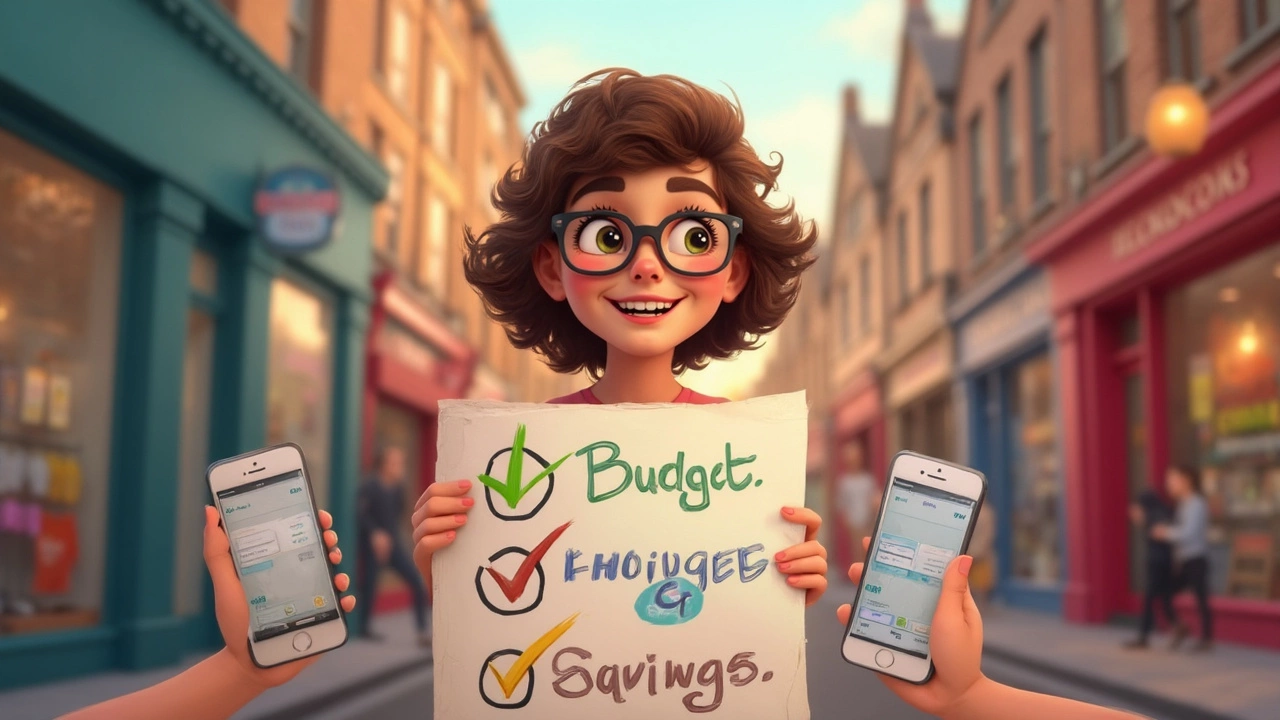Budgeting Basics: The First 5 Things You Should List in a Budget
 Jun, 12 2025
Jun, 12 2025
If your paycheck always seems to vanish faster than you’d like, your budget probably needs a real game plan. The trick isn’t just to write down numbers—it’s about starting with the right things so you don’t end up short on the stuff you actually need.
Begin your budget by nailing down your biggest, can’t-skip expenses. Missing any of these can turn life into a major headache quick. We’re talking rent or mortgage, power and internet, basic groceries (not the luxury snacks), gas or metro, and making sure you’re not dodging payments on any credit cards or loans. That’s your foundation.
Most people set themselves up for stress by putting ‘fun money’ or shopping first and hope there’s enough for everything else. Never works. Get your essentials locked in first. Trust me: once you have these dialed in, you’ll be surprised how much less money stress you feel each month.
- Rent or Mortgage: Your Top Priority
- Utilities and Household Bills
- Groceries and Essential Food Items
- Transportation Costs
- Debt Payments and Minimums
Rent or Mortgage: Your Top Priority
Your housing cost eats up more of your paycheck than any other bill, so it deserves top spot on your budget list. Most experts recommend keeping rent or mortgage around 30% of your monthly income—go above that, and you start feeling squeezed for everything else. This one line item often makes or breaks your whole budgeting plan.
Here’s the thing: skipping your rent or mortgage isn’t really an option. Miss a payment, and you risk late fees, bad credit, or even losing your place. That’s why it needs to be the very first number you write down, and it has to be paid before you even think about other bills. Your home is your foundation—literally.
It helps to have the exact numbers in front of you. If you rent, grab your lease so you’re not guessing. If you own, double-check your loan statement because escrow, taxes, or insurance can sneak in and bump up what you actually owe monthly. Don’t forget those details—underestimating hurts your budget fast.
| Average U.S. Housing Costs (2024) | Monthly Estimate |
|---|---|
| Median Rent | $1,300 |
| Median Mortgage Payment | $1,950 |
Pro tip: If your rent or mortgage has jumped recently, call your landlord or lender and ask about payment plans or relief options. A lot of people just pay the bill and hope for the best, but sometimes you can actually negotiate or get temporary help. If those numbers above are way higher than your income can handle, it might be time to look for a roommate or downsize—tough call, but way better than living under money stress every month.
And if you’re working on your budget with someone else, be open about the real numbers. It beats fighting over late payments later on.
Utilities and Household Bills
Once you’ve dealt with your rent or mortgage, your next move is to cover utilities and household bills—these are the lifelines that keep your house running. People sometimes forget one or two, only to get hit by a surprise shut-off notice. Don’t make that mistake. List them out and be realistic about costs, since prices can go up or down depending on the season or your habits.
Your core bills usually include:
- Electricity
- Water and sewer
- Natural gas or heating fuel
- Trash and recycling pickup
- Internet (let’s be real—these days, it’s not just a luxury)
- Cell phone or landline
Some folks also have extra bills, like security systems or HOA fees. Try not to overlook annual fees, quarterly bills, or one-off charges that creep in, like chimney cleaning or pest control.
Here’s a fact you can’t ignore: the average American household spent about $429 per month on utilities in 2024 (budgeting tip—you can check your own statements to see how you stack up). Want to get even more specific? Take a look at the breakdown below for typical monthly costs in the U.S. for 2024:
| Utility | Average Monthly Cost |
|---|---|
| Electricity | $137 |
| Natural Gas | $63 |
| Water & Sewer | $72 |
| Trash Collection | $22 |
| Internet | $58 |
| Cell Phone | $77 |
Prices will obviously shift if you live somewhere super hot, super cold, or rural versus city. The key is to check your bills from the last few months to catch any trends—are your power bills spiking every summer? Did your internet provider sneak in another hike?
Quick tip: if any bill keeps inching up, call the company and ask about better rates, promos, or bundling. Some providers sneak extra charges unless you ask for a discount or remove stuff you don’t use. Just a five-minute phone call could save you $20 a month, which adds up over a year.
Once these bills are on your list and budgeted, you know the basics will be handled—no paranoia about the lights going off or your Wi-Fi vanishing when you really need it.

Groceries and Essential Food Items
Let’s talk about the one budget item that adds up fast: food. Eating out for every meal drains your wallet quickly, but even grocery shopping can catch you off guard if you’re not careful. According to the USDA, a thrifty adult grocery budget averages $250 per month, but most people spend much more when they shop without a plan.
When you build your budget, put groceries right up there with your top priorities. Buying your own food saves way more money than takeout, and you get to control the nutrition you actually eat. The trick is separating ‘needs’—basic staples, proteins, dairy, fruits, and veggies—from ‘wants’ like soda, candy, or those random extras you grab on impulse.
- Make a shopping list before you go to the store and stick to it.
- Plan your meals for the week ahead—breakfasts, lunches, dinners, even snacks.
- Check your pantry so you don’t double-buy what you already have.
- Use store loyalty programs or digital coupons—you can save $30 a month on average this way.
- Buy generic brands. They’re almost always cheaper and taste just as good as name brands.
If you constantly overspend on food, try paying with cash for groceries for a month. You become way more aware of what you’re tossing into the cart. Remember, controlling your budgeting at the grocery store gives you flexibility for treats later—without the guilt or stress at the checkout line.
Transportation Costs
Getting around eats up more of your paycheck than most people realize. Whether you drive, take the bus, or ride a bike, transportation costs add up fast—often the third-biggest chunk of a budget after rent and groceries in the U.S. according to the Bureau of Labor Statistics.
Don’t just count your car payment if you have one. Start by listing every expense that keeps you moving:
- Gas or charging costs (for the EV drivers out there)
- Car insurance (skipping it isn’t really an option)
- Maintenance and repairs—oil, brakes, tires, unexpected fixes
- Public transportation fares like bus, subway, or commuter train passes
- Parking, tolls, and car registration fees
- Rideshares or taxis if you use them regularly
When you’re putting together your budgeting plan, plug in a number for each item, even if it feels small. Miss enough oil changes and your car will let you know—probably at the least convenient time. If you don’t drive, don’t skip this section. Monthly passes, cabs, or even renting a bike can eat into cash just as quickly.
One handy trick: check your last two months of spending to find surprises. Those random Ubers on rainy days or parking meter “just a few bucks” moments really add up. Knowing your real monthly average makes it way easier to avoid those end-of-the-month scrambles.
And here’s a money-saving tip—ask about discounts on transit passes, carpool when you can, and shop insurance rates once a year. Squeezing even $30 out of this category means more leftovers for the stuff you actually enjoy.

Debt Payments and Minimums
This is one spot you cannot ignore if you want to get ahead with your money. Every month, you need to at least pay the minimums on things like credit cards, car loans, and student loans. Skipping these gets expensive quickly—late fees rack up, your credit score drops, and you can wind up buried in interest.
As of 2024, the average American household with credit card debt pays around $1,200 a year in interest alone. That’s money you could be putting to better use. So, whether your balance is big or small, locking in these payments as a fixed part of your budget is non-negotiable.
- List every debt you owe, no matter how small.
- Write down each minimum payment due for the month.
- Total up all debt minimums so you know the bare minimum you need to pay each month just to stay afloat.
- If you have extra cash after covering essentials, put it toward the debt with the highest interest rate (that’s called the avalanche method) or the smallest balance (the snowball).
Try not to ignore medical bills, “buy now, pay later” purchases, or money you owe family or friends—these matter, too.
| Type of Debt | Average Interest Rate |
|---|---|
| Credit Cards | 21.6% |
| Auto Loans | 7.1% |
| Student Loans | 5.5% |
If you only pay the minimum, most of your payment goes to interest, not the principal. That’s why setting aside money for extra payments—even small amounts—gets you out of debt faster.
People who focus on budgeting and include debt minimums as non-negotiables are way less likely to fall behind. The best time to set this habit is before you’re stretched thin by surprise bills or job changes.
